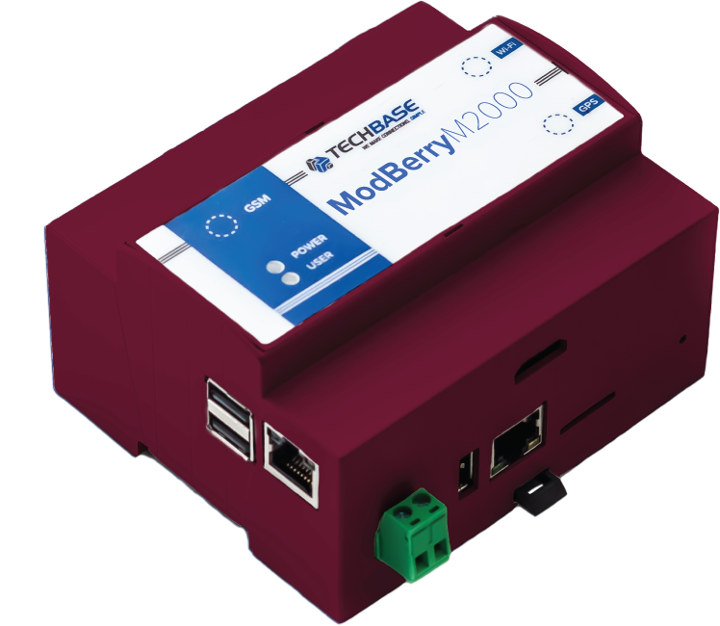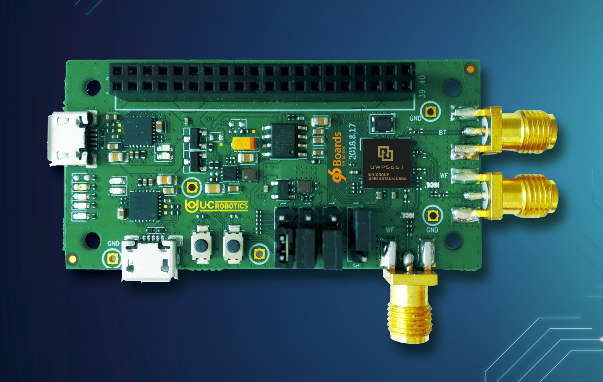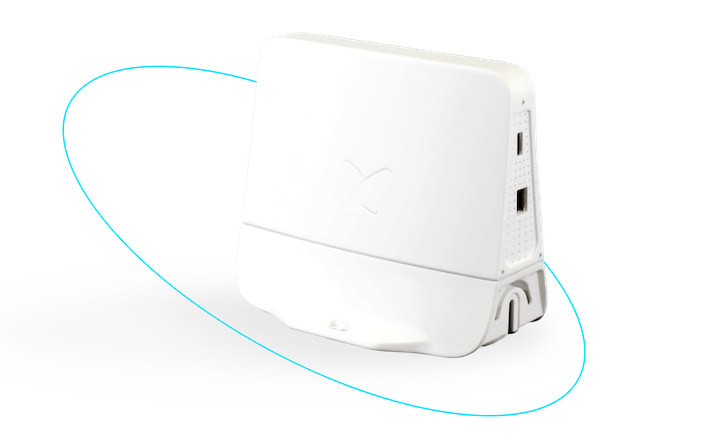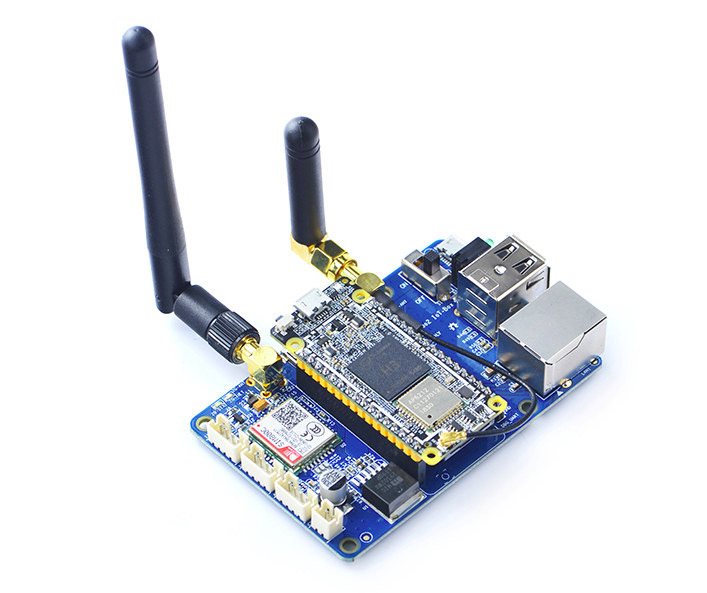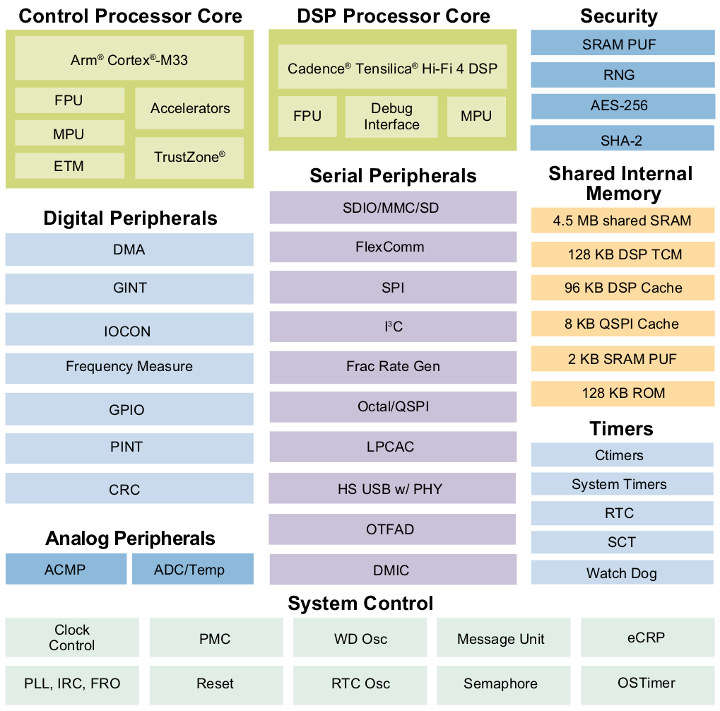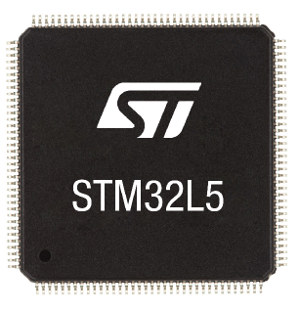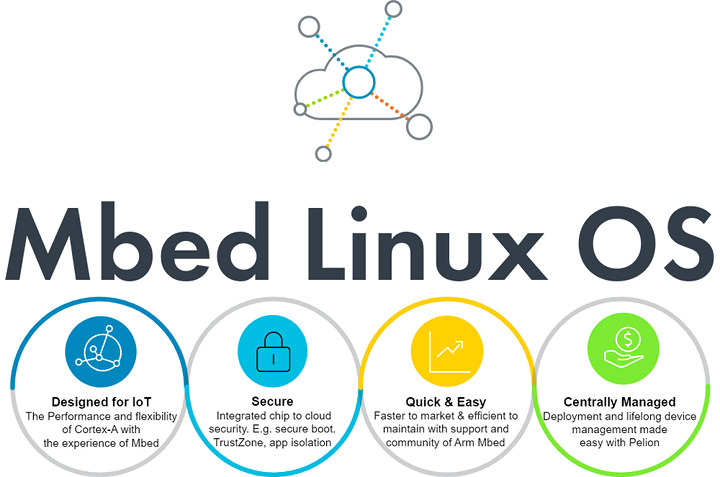TECHBASE has been providing DIN rail mountable Arm and x86 based Modberry industrial computers / IoT gateways for several years. The company has now upgraded ModBerry M1000 model with an Intel Cherry Trail UP board to ModBerry M2000 computer featuring AAEON UP Squared board powered by either an Intel Celeron N3350 dual core processor, or Pentium N4200 quad core processor, both part of Intel’s Apollo Lake family. ModBerry M2000 specifications: SoC (one or other other) Intel Celeron N3350 dual core processor @ 1.10 / 2.40 GHz with Intel HD Graphics 500; 6W TDP Intel Pentium N4200 quad core processor @ 1.10 / 2.50 GHz with Intel HD Graphics 505; 6W TDP System Memory – 2, 4, or 8GB RAM Storage – 16, 32, 64, or 128GB eMMC flash, SATA connector and M.2 SATA socket Video Output – 1x HDMI Connectivity – 2x Gigabit Ethernet, with optional LTE/3G, WiFi, ZigBee, LoRa, […]
96Boards IoT Edition IVY5661 Board Features UniSoC UWP5661 WiFi 5 + Bluetooth 5 SoC
If you ever wanted to start a new IoT project with WiFi and Bluetooth connectivity, you’d like think about using Espressif ESP32 WiSoC that supports single band 802.11 b/g/n WiFi (WiFi 4) and Bluetooth 4.2 LE thanks to great community and software support on top of the ultra low cost of the solution. But in case your require 802.11ac (WiFI 5) – yes, I’m trying hard to get used to the new WiFi naming scheme for consumers -, or Bluetooth 5, Espressif Systems does not offer such solution yet. Instead you may consider UniSoC UWP5661 Arm Cortex-M4 WiSoC with WiFi 5 & Bluetooth 5 connectivity that will be found in the soon-to-be-launched UcRobotics IVY5661 96Boards IoT Edition board. I could not find lots of information about UWP5661 chip tself, so let’s jump directly to IVY5661 board specifications: SoC – UniSoC UWP5661 dual core Arm Cortex-M4 microcontroller @ 416 MHz manufactured […]
Sigfox Introduces Access Station Micro Sigfox Gateway
There are plenty of long range LPWAN standards for the Internet of Things, but the most common ones include LoRaWAN, NB-IoT, and Sigfox. LoRaWAN lead the way in terms of deployments, while NB-IoT and eMTC leverage existing cellular infrastructure but cost a bit more to operate. Sigfox works with $2 modules, but AFAIK so far you had to subscribe to the company network, and if your area was not covered you were out of luck. Sigfox Access Station Micro gateway promises to change the situation, as companies can now add their own Sigfox gateway(s) where coverage is not available, and this could make Sigfox more popular, especially if one or more communities similar to The Things Networks form(s) around it. Sigfox Access Station Micro SMBS-T4 specifications: Radio characteristics: Standard – Sigfox Ultra Narrow Band Protocol for M2M and IoT Max range of operating frequencies – 865 to 928 MHz Max […]
Embedded Recipes 2018 Videos and Slides Released
Embedded Recipes 2018 happened in Mozilla building in Paris, France on September 24 & 25, where developers talked about “open source solutions in the embedded world: developer, contributor, tools, platforms…” We previously mentioned the event in a post about an open source video decoder driver for Amlogic S905, S905X and S912 processors with BayLibre scheduled to talk about their work there. There’s now released slides and videos for the event for all sessions including: SoC+FPGA support in 2018 by Marek Vasut Shared memory and telemetry by Yves-Marie Morgan Updating an embedded system with swupdate by Charles-Antoine Couret Finding sources of latency in your system by Steven Rostedt Io(M)T Security: A year in review by Rayna Stamboliyska Using yocto to generate container images for yocto by Jérémy Rosen linuxboot by Jean-Marie Verdun and Trammell Hudson End-to-end software production for embedded by Guy Lunardi WooKey: the USB Battlefront Warrior by Mathieu Renard, […]
Tiny NanoPi Duo2 Board Comes with WiFi, a Camera Interface, an Optional 2G-IoT Dock
NanoPi Duo was launched last year as an ultra-cheap ($8+) Arm Linux board that fits into a breadboard. The board was powered by Allwinner H2+ processor coupled with 256 or 512MB RAM, and the infamous XR819 802.11b/g/n WiFi chip. FriendlyElec has now launched NanoPi Duo2, that’s still breadboard compatible, but with a slightly longer form factor, Allwinner H3 processor, 512 MB RAM, better WiFi thanks to an AP6212 module, and an extra camera interface. As we’ll see further below the company also developed a carrier board for 2G cellular IoT applications. NanoPi Duo2 specifications with highlights in bold showing differences again NanoPi Duo: SoC – Allwinner H3 quad core Cortex A7 processor @ 1.2 GHz with Mali-400MP2 GPU System Memory – 512 MB DDR3 SDRAM Storage – micro SD card slot, footprint for SPI flash Connectivity – 802.11 b/g/n WiFi + Bluetooth 4.0 LE (Ampak AP6212 module) with chip antenna, […]
NXP Unveils i.MX RT600 Series Arm Cortex-M33 + Audio DSP Crossover Processor
A little over a year ago, NXP introduces their first crossover processor that blurs the line between real-time capabilities of microcontrollers and higher performance of application processors with NXP i.MX RT1050 processor equipped with a Cortex-M7 core clocked at up to 700 MHz. The company has now announced another model with lower power consumption. NXP i.MX RT600 series comes with a Cortex M33 core clocked at up to 300MHz, a Cadence Tensillica HiFi 4 audio DSP, and up to 4.5MB shared SRAM. Main features of NXP i.MX RT685 crossover processor: CPU Core – Arm Cortex-M33 up to 300 MHz DSP – Tensilica Hi-Fi 4 up to 600 MHz Memory Up to 4.5 MB on-chip RAM 128KB DSP TCM, 128 KB DSP Cache Storage 96KB ROM on-chip 2x SDIO with 1x supporting eMMC5.0 w/ HS400 1x Octal/Quad SPI up to 100MB/s Peripherals 2x DMA Engines with 35 channels each 1x USB […]
STMicro STM32L5 Cortex-M33 ARMv8-M MCU Family Targets Secure IoT Applications
STMicro STM32 microcontrollers have so far been based on Arm Cortex-M0/M0+, M3, M4, or M7 cores, although we’ve also seen a yet-to-be formally announced Cortex A7 variant shows up in Linux 4.17 with STM32MP157C. The company has very recently announced a new family, namely the STM32L5 series, powered by an Arm Cortex-M33 ARMv8-M 32-/64-bit TrustZone enabled core clocked at up to 110 MHz, and equipped with on-chip SMPS for easy low power efficiency, USB FS device, and USB type-C PD Controller. Two sub-families are part of the STM32L5 series: STM32L552 with 256 to 512 KB of Flash memory and from 48 to 144-pin packages. STM32L562 with 512 KB of Flash memory, and an additional encryption accelerator engine (AES, PKA, and OTFDEC). Besides the extra HW crypto block both share the same key specifications: MCU Core – Arm Cortex-M33 ARMv8-M core clocked at up to 110 MHz (+20% versus Cortex-M4) with […]
Arm Mbed Gets a Linux OS for Cortex-A Processors
Arm Mbed is known as a free, open source platform and operating system that makes it easier to design IoT products based on Cortex-M micro-controllers, but the company figured out it might be a good idea to make something similar for IoT devices based on Arm Cortex-A processor and that’s exactly what Mbed Linux OS is made for. Embedded & IoT devices normally need to be supported for many years, often optimized for cost and battery life, and make sure security patchsets are applying to your products. Companies often managed to do all those themselves but it’s not the most cost-effective solution, so instead Arm decided to leverage Linux and offer Mbed Linux OS optimized for IoT devices yo their customers. The solution comes with built-in security, device management (e.g. OTA firmware upgrades) via the Pelion IoT Platform, common development tools for faster time to market, and so on. Some […]


